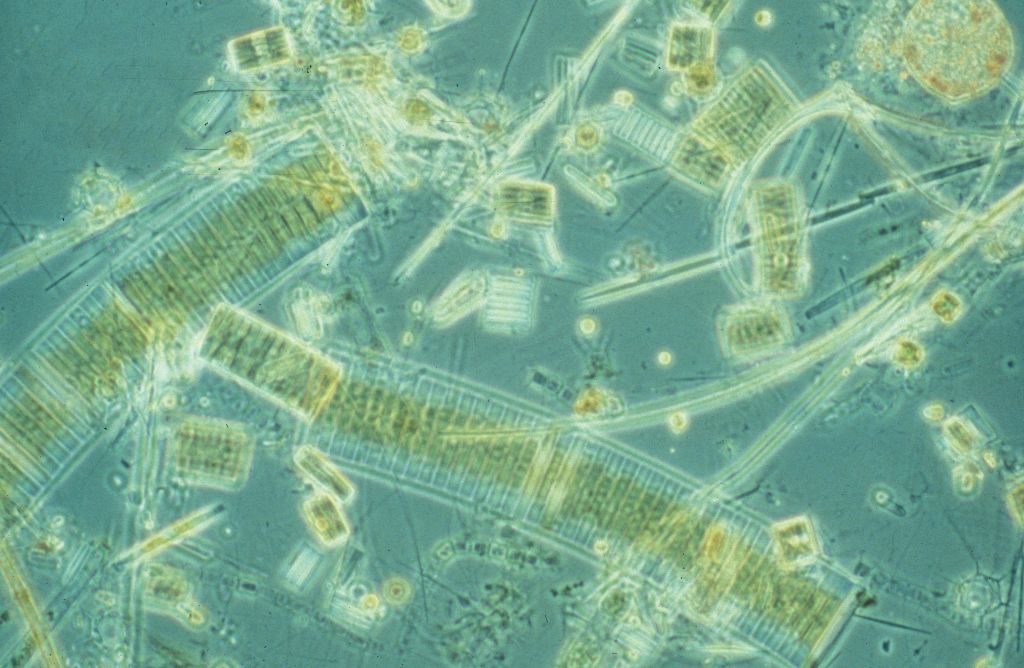Algae Underside of Arctic Thrive Even at 0.02% Light
Microalgae colonizing the underside of sea ice in spring are a key component of the Arctic foodweb as they drive early primary production and transport of carbon from the atmosphere to the ocean interior.
Onset of the spring bloom of ice algae is typically limited by the availability of light, and the current consensus is that a few tens-of-centimeters of snow is enough to prevent sufficient solar radiation to reach underneath the sea ice.
Given the unique conditions, a new study by scientists at the Aarhus University, Denmark comes as a surprise. The team has found that the small ice algae on the underside of the Arctic sea ice live and grow at a light level corresponding to only 0.02% of the light at the surface of the ice.
It is pitch dark all winter in the Arctic. And even when the spring sun appears in the sky, the compact ice and snow layer allows only a tiny amount of light to penetrate into the sea. Here, in this extreme environment where temperatures are below the freezing point and salinity is higher than in the sea water, and where light penetration is
extremely low for a large part of the year, the ice algae are found.On the underside of the sea ice microscopic algae have adapted to the very extreme conditions prevailing here. Among these are diatoms that reside on the underside of the ice and in small channels in the ice – the so-called brine channels, where heavier saline water flows out of the ice and into the sea.
This light level measuring at 0.02 percent of the light hitting the top of the ice and snow on a sunny day wherein the algae was able to thrive, is the lowest threshold for active photosynthesis ever recorded.
“We worked on the sea ice in April-May, where there was a meter of sea ice and a meter of snow on top of the ice,” Lars Chresten Lund-Hansen, a scientist with Aarhus University’s Arctic Research Center in Denmark, said in a news release. “With special ice corers we drilled holes in the ice so that we could measure the ice algae on the underside of the ice and collect samples.”
“Our measurements showed that the ice algae began to grow at a light intensity below 0.17 μmol photons m-2 s-1. This corresponds to less than 0.02% of the amount of light that reaches the surface of the snow on a sunny day,” says Kasper Hancke, currently working at the Norwegian Institute for Water Research (NIVA) in Oslo, who was responsible for the field work.

The general view has been that ice algae do not obtain sufficient light for growth when they are covered by a more than 30-50 cm deep cover of snow and ice. The new measurements completely change that view and show that ice algae may play an important role much earlier in the spring in the Arctic than hitherto assumed.
“Temperatures are rising in the Arctic. When the snow on top of the ice gets warmer, the algae residing on the underside of the ice receive more light,” Lund-Hansen said. “This may significantly impact the growth of the algae and the extent of the ‘spring bloom.’ This new knowledge must be considered in the puzzle of how the Arctic will respond to a warmer world.”































